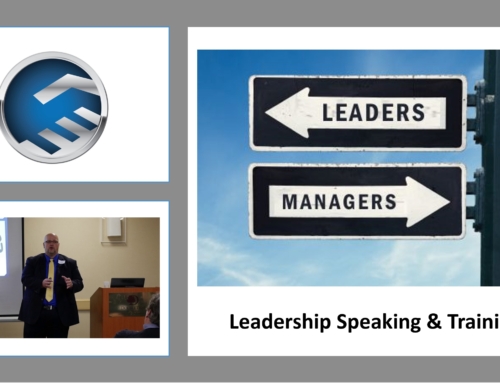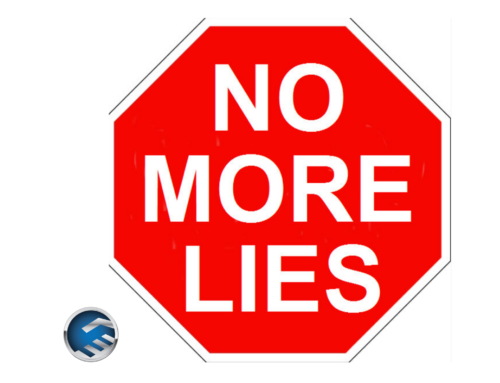What Makes a Good Organizational Culture?
A good organizational culture does not happen magically. Owners believe that they build a company and these things should just fall in place simply by hiring good or talented people. The odds of that actually happening is rare. You must build it in large and small ways every day in your business. For example, your hiring process needs to go beyond looking at applicants to meet the base job requirements. New hires should know your vision and values and share many of those same values as well and they must be a perfect fit for what the business needs. You cannot put a square peg into a round hole without some painful shaving and reshaping.
Your organization’s vision should be more than just catchy statement on your “about” page. It should be the driving force behind your company, guiding all critical decisions and should be echoed by ALL staff.
The most important question you can ask yourself is do you provide your team with a clear concise vision of the company and your direction, and do they know their role and job functions without question within that vision.
Most times, sadly the entire vision of this business is never fully understood or realized by the team because it never is allowed to leave the mind of the entrepreneur and be embraced by the team. Most entrepreneurs are excellent at assembling a business and a vision but their skill set lacks the ability to communicate effectively that vision to their leaders and team. This results in massive frustration to all parties involved.
The next question you need to ask yourself is do you provide sufficient resources to empower and develop your staff and managers? Your managers and employees need the right tools to help them accomplish their job duties and to work toward the long-term goals of the company. These can include clear expectations on results, key performance indicators that allow them to easily see how they are performing, and systems and processes to ensure that they can execute the job perfectly even when adversity arrives. Employees should be fulfilled by their positions. If they don’t understand their place in your organization or feel that their input is not valued, the company morale will suffer and the business will lose money in lost productivity and staff turnover. Managers and leaders are the most important part of this equation because they set the tone!
How Managers Reinforce Your Company’s Culture
Managers directly influence corporate culture through leadership, communication, delegation and accountability. They can strengthen your business culture by ensuring that their actions and words adhere to the values and vision of the organization. Managers need to set a good example for their team to encourage adoption of the culture. Clear and transparent communication promotes frequent feedback, sharing and collaboration with staff. Managers have an easier time in conveying cultural values when they have that clear vision and feedback from the ownership.
Your managers’ leadership style should be shaped by the culture; which is leader led. If your company emphasizes a positive work-life balance and working together, then managers should show that through their actions. The team needs a positive role model to look up to and emulate. In this environment, managers should collaborate with other teams as a way of bringing these values into their leadership skills. Delegation also plays a role in cultural reinforcement. Your managers empower team members with responsibilities capable of showing them a big picture of their work. They have ownership of this duty and understand how it fits into the company’s plan. Their job isn’t disconnected from the vision. In fact, it’s an integral part of it. Effective delegation gives your managers more time to emphasize the organization’s values and builds trust within the team.
Lastly, accountability is key in this role. We have all been that person, or know of an employee who hates going to work because they do all the work, pick up the slack and get paid the same or less than the person who doesn’t perform. Think about the long-term effect that this has on your team, your company and your profits. As a leader, you must hold your team (all of them) accountable for the desired results.
The Importance Proper Training Has on Culture
Proper communication skills are some of the most important tools to influence organizational culture in a positive fashion. in addition to proper communication, training is vital. Turnover is one of the largest issues our clients have and it costs them tens of thousands of dollars annually. Contrary to what most people think, we have discovered that the turnover is almost never due to what the employee is paid. Here is the top 5 things we have discovered through doing exit interviews with former staff of our clients.Ownership or management didn’t listen to suggestions or wouldn’t fix problems when brought up by the
- Ownership or management didn’t listen to suggestions or wouldn’t fix problems when brought up by the team
- Didn’t feel like part of the team. (cliques, long term staff ran the team off, etc.)
- Didn’t feel they had the tools (or not empowered) to do their job
- Felt like no chance for advancement
- Disliked their boss or manager greatly (which we feel came as a result from many of the issues mentioned above)
As you can see, money isn’t mentioned anywhere in the top 5. I know what some of you are thinking right now. You are saying, “I am a small business and there isn’t room for promotions or raises in my company”. My answer to that is simple. I don’t care how small you are, you have the unique opportunity to invest in people’s lives as a boss or business owner. You can not only teach them business, processes, leadership and management functions, but you have the ability to shape them and who they are as a person, a leader and a member of society. If you don’t have a structured, clearly defined training process in your business you need to do everything in your power to get one.
The Cost of Poor leadership is Great
You may say one of the barriers to doing this is cost. Think about this as an example:
The average cost of turning over an employee and having to find and hire another one is estimated to be over $5,000 each employee (could be 10 times that much if you have to use a recruiter to find that person). Let’s stay you have a staff of 10 and your annual turnover is 50% (which is about “normal” for the united states with all business types combined) that means you hire and train 5 new people each year.
5 (new staff) X $5,000 (avg hard cost of turnover)= $25,000 annually
This number is a yearly cost so if you if you are in business for 10 years, you can do the math….. the cost is huge and it doesn’t even consider the lost sales, productivity, less profits, and worse work life balance for you and your staff during turnover. What is the real cost? The benefits of training greatly outweigh the expenses related to a negative company culture resulting in high turnover, low morale and subsequent poor productivity and quality. When you sit back and evaluate this in detail, you will see that even if the cost of having someone help you put this training system in place is $20,000, it pays for itself in one year or less.
At Devoted Business Development, we help companies in many areas and one of them is the 7-step process that we give to them that will help them:
– Developing Performance Goals and Standards for each position and staff member
– Give Them Effective Discipline and accountability
– Providing Performance Feedback Regularly
– Resolving Conflicts
– Supporting Change for the Team
-The Ability to Promote from Within (even from entry level all the way to CEO is possible!)
How much money can this save your business and make your business over the course of its lifetime? If you would like more information on this or anything else that we do, please contact us!





